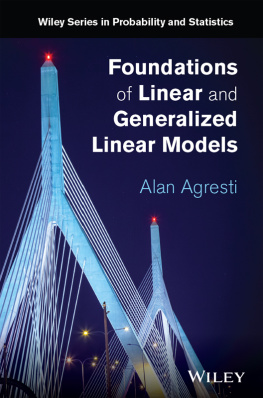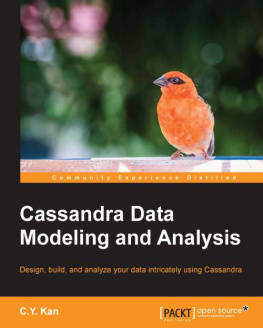Copyright 2018 by Scott E. Page
Cover 2018 Hachette Book Group, Inc.
Hachette Book Group supports the right to free expression and the value of copyright. The purpose of copyright is to encourage writers and artists to produce the creative works that enrich our culture.
The scanning, uploading, and distribution of this book without permission is a theft of the authors intellectual property. If you would like permission to use material from the book (other than for review purposes), please contact permissions@hbgusa.com. Thank you for your support of the authors rights.
Published by Basic Books, an imprint of Perseus Books, LLC, a subsidiary of Hachette Book Group, Inc. The Basic Books name and logo is a trademark of the Hachette Book Group.
The Hachette Speakers Bureau provides a wide range of authors for speaking events. To find out more, go to www.hachettespeakersbureau.com or call (866) 376-6591.
The publisher is not responsible for websites (or their content) that are not owned by the publisher.
It can scarcely be denied that the supreme goal of all theory is to make the irreducible basic elements as simple and as few as possible without having to surrender the adequate representation of a single datum of experience.
To me success means effectiveness in the world, that I am able to carry my ideas and values into the worldthat I am able to change it in positive ways.
Maxine Hong Kingston
This book began as the result of a chance meeting with Michael Cohen in 2005 near the flower garden in the mall adjacent to the University of Michigans West Hall. Michael, a scholar known for his generosity, made a comment that altered my teaching career. With a twinkle in his eyes, Michael said, Scottie, I once taught a course called Introduction to Modeling for Social Scientists, based on a book written by Charles Lave and James March. You should resurrect the course. It needs you.
It needed me? I returned to my office a little confused, so I chased down an old course syllabus. I discovered that Michael had misled me. The course did not need me. I needed it. I had been wanting to develop a course that would introduce students to the core ideas of complex systemsnetworks, diversity, learning, large events, path dependence, tipping pointsthat would be relevant to their daily lives and future careers. By teaching modeling, I could make students better thinkers while introducing them to complexity. I could teach them tools that would improve their abilities to reason, explain, predict, design, communicate, act, and explore
The courses motivating idea would be that we must confront the complexity of the modern world with multiple models. At semesters end, rather than see the world from a particular angle, students would see the world through many lenses. They would be standing in houses with many windows, able to look in multiple directions. My students would be better prepared for the complex challenges before themimproving education, reducing poverty, creating sustainable growth, finding meaningful work in an age of artificial intelligence, managing resources, and designing robust financial, economic, and political systems.
The next fall, I resurrected the course. I contemplated rebranding it as Thirty-Two Models That Will Turn You into a Genius, but the culture at Michigan frowns on hyperbole, so I stuck with Michaels title: An Introduction to Modeling. Lave and Marchs book proved to be a brilliant introduction. However, modeling had made huge advances in the intervening decades. I needed an updated version that included models of long-tailed distributions, networks, rugged landscapes, and random walks. I needed a book that discussed complexity.
So I began to write. For two years, the ground proved rocky. My plow moved at a slow place. One spring day, I again ran into Michael, this time in the arch-way underneath West Hall. I had been questioning the course, which was now drawing twenty students. Were models too abstract for undergraduates? Should I teach a different course on a specific issue or policy domain? Michael offered up a smile, noting that any endeavor worth pursuing merited questioning. As we parted, Michael commented on the importance and value of helping people think clearly. He told me not to give up, that he took joy in my challenges.
In the fall of 2012, the ground under the course shifted. Vice Provost Martha Pollack asked me to teach an online versionwhat is now called a MOOC. With a tablet computer, a $29 camera, and a $90 microphone, Model Thinking was born. With assistance from too many people at Michigan, Coursera, and Stanford University to thank properly (a quick shout-out to Tom Hickey, who did yeomans work), I reorganized my lectures into a form suitable for an online course, dividing each subject into modules and removing all copyrighted material. With my dog Bounder as an audience, I taped and retaped lectures.
The first offering of Model Thinking drew 60,000 students. That number now approaches a million. The popularity of the online course led me to abandon the book. I thought the project unnecessary, but, over the next two years, my email inbox began to fill with requests for a book to complement the online lectures. Then Michael Cohen lost his battle with cancer, and I felt that I needed to finish the book. I reopened the manuscript folder.
Writing a book requires large blocks of time and spaces that allow for clear thought. The poet Wallace Stevens wrote, Perhaps the truth depends on a walk around the lake. I relied on a close analog: mind-clearing swims across Winans Lake, where my family spends our summers. Throughout the writing process, the continuous life I share with the love of my life, Jenna Bednar, our sons, Orrie and Cooper, and our enormous dogs, Bounder, Oda, and Hildy, has brought laughter, comfort, and opportunitiesamong them Orrie having one week to correct the penultimate drafts mathematical errors and Jenna having two weeks to identify instances of unclear writing, logical flaws, and muddled thinking. As has been true of most of my written work, this manuscript might be best described as an original draft by Scott Page with substantial revision by Jenna Bednar.
During the seven-year period of writing this book, my children have transitioned from pre-teens to young adults. Orrie is now off to college. Cooper follows next year. In the interval between sketching the initial outline and submitting the final version, my family has consumed copious amounts of bibimbap, pasta carbonara, and oatmeal chocolate chip cookies, taken the saws and loppers to scores of fallen branches and limbs, repaired dozens of breaks in the backyard fence, embarked on numerous failed initiatives to reduce the entropy in the basement and garage, and wished and hoped for the ice on the lake to be suitable for skating. We have also had to accept loss. Midway through the project, my mother, Marilyn Tamboer Page, died from a sudden heart attack while enjoying the bliss of her routine daily walk with her dog. Not a day goes by when I do not reflect on the love she showered on her family and the support she gave to others.
The book before you is as complete as it can be at this moment in time. Doubtless, new models will be created, and old models will find new uses creating gaps in this current offering. As I humbly send the manuscript out into the world, I feel that my efforts will have been repaid if you, the reader, find the models and ideas within to be useful and generative, and that you are able to carry them out into the world and change it in positive ways.












